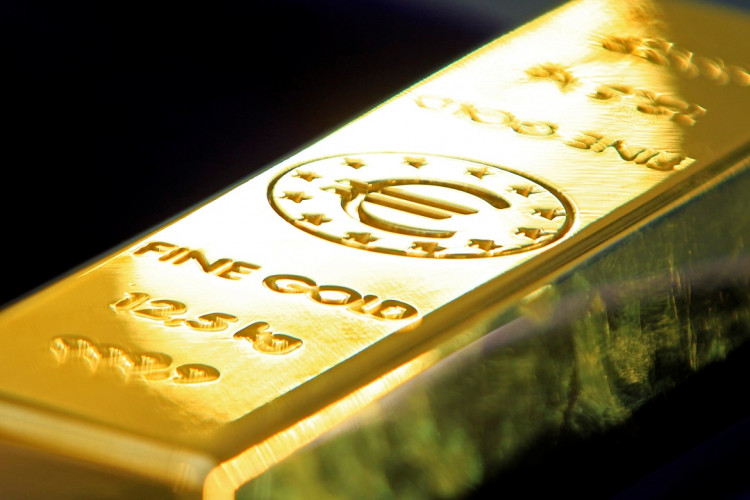Gold surged to an all-time high of $2,631.40 per ounce, propelled by the U.S. Federal Reserve's recent interest rate cuts and escalating global geopolitical tensions. Investors, looking for safe-haven assets, have turned to gold as traditional interest-bearing assets such as short-term government bonds become less attractive in a low-interest-rate environment. The recent rally in gold, which has seen a more than 27% increase year-to-date, marks a new peak for the precious metal and highlights its appeal as a hedge against economic uncertainty.
The Federal Reserve's decision to reduce interest rates by 0.5% last week marked a significant shift in monetary policy, creating favorable conditions for gold. As interest rates fall, non-interest-bearing assets like gold gain competitive advantage over bonds, driving investors toward the precious metal. Spot gold maintained its upward momentum, hovering around $2,629 per ounce on September 23, with futures reaching as high as $2,654.90.
Geopolitical risks have also played a crucial role in the rise of gold prices. Ongoing conflicts, including the Russia-Ukraine war and tensions between Israel and Hamas, have heightened global economic uncertainty. These events have led to an increase in demand for gold as a protective measure against potential market volatility. According to Goldman Sachs, global central banks have significantly ramped up their purchases of gold since Russia invaded Ukraine, tripling the volume of their acquisitions.
Researchers at Goldman Sachs project that gold prices could climb even higher, potentially reaching $2,700 by early 2025, driven by expectations of further rate cuts by the Federal Reserve. This bullish outlook is supported by ongoing concerns about inflation and currency devaluation, which make gold an attractive asset for investors seeking stability.
Peter Boockvar, chief investment officer at Bleakley Financial Group, cautioned that despite the recent rally, gold has not yet surpassed its inflation-adjusted peak of $3,200, which was reached in 1980. However, he added that the current macroeconomic conditions could eventually lead to new inflation-adjusted highs for the metal.
While gold has garnered significant attention for its recent performance, digital currencies, often referred to as "digital gold," have also seen gains in the wake of the Fed's interest rate cut. Bitcoin, which is frequently compared to gold due to its limited supply and function as an alternative asset, climbed 8.5% following the Fed's decision. On September 23, Bitcoin hit a four-week high of $64,660, with analysts predicting that the cryptocurrency could experience a major breakout by the end of 2024.
Markus Thielen, CEO of 10x Research, noted in a report that Bitcoin's performance has been consistent with its seasonal pattern, suggesting that a major rally could be on the horizon. "The likelihood of a major breakout increases as we near the pivotal October-to-March window," Thielen said. He added that traders should anticipate Bitcoin reaching new all-time highs in the final quarter of 2024.
Despite Bitcoin's rise, some traditional gold investors remain skeptical of digital assets. Longtime gold advocate Peter Schiff took to social media platform X, formerly known as Twitter, to express his disappointment in what he sees as investor indifference toward gold's achievements. "Gold just hit another record high, but few investors notice or care," Schiff said. "With so much attention focused on Bitcoin, investors are missing out on gold's gains and the significance of its rise."
Gold-backed cryptocurrencies, a hybrid of physical gold and digital assets, have also seen increased interest amid the broader rise in gold prices. Tokens like PAX Gold and Tether Gold, which are pegged to the value of physical gold, have reached new highs, reflecting growing investor demand for stable, asset-backed digital investments. PAX Gold recently hit a new record of $2,633, while Tether Gold also reached unprecedented levels. These gold-backed cryptocurrencies offer investors the stability of physical gold with the advantages of blockchain technology, providing an alternative to both traditional gold investments and more speculative digital currencies.
Looking ahead, analysts believe that the gold market remains poised for further growth. Antonio Ernesto Di Giacomo, Senior Market Analyst at XS, commented on the broader outlook for gold, stating, "Historically, lower interest rates have benefited gold, as the metal does not generate interest and becomes more competitive than other interest-bearing assets like bonds. In a low-interest-rate environment, investors tend to seek assets that preserve value against potential currency devaluation, further boosting gold demand."






